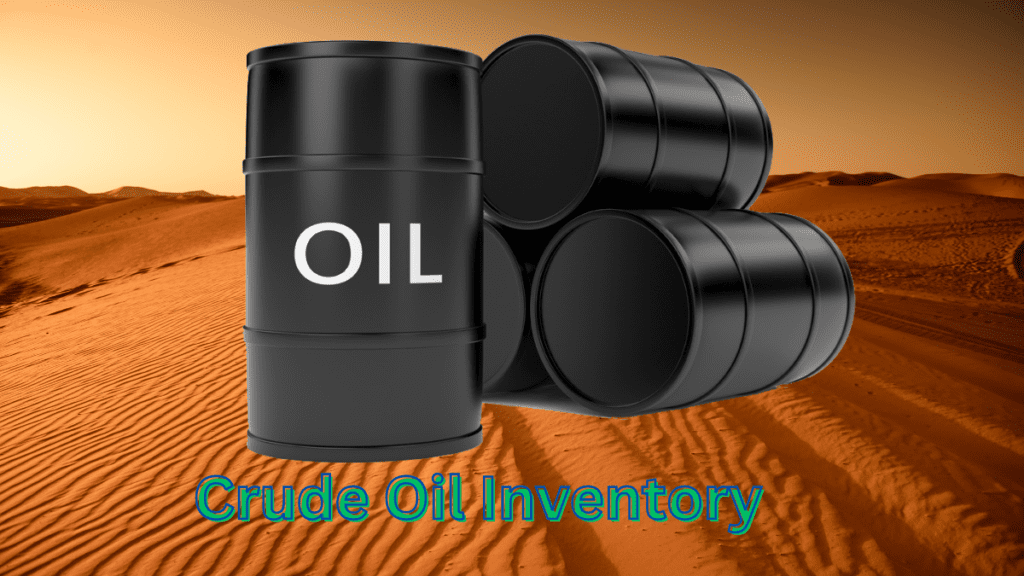What are Crude Oil Inventories?
Crude oil inventories are the total stocks of crude oil held by commercial firms, governments, and other entities. These inventories are used to meet demand for crude oil and to provide a buffer against unexpected supply disruptions.
Crude oil inventories are typically held in storage tanks at refineries, oil terminals, and other facilities. The level of crude oil inventories can vary depending on a number of factors, including:
- Production: When crude oil production is high, inventory levels tend to rise. When crude oil production is low, inventory levels tend to fall.
- Demand: When crude oil demand is high, inventory levels tend to fall. When crude oil demand is low, inventory levels tend to rise.
- Seasonal factors: Crude oil demand tends to be higher in the winter months, when there is more demand for heating oil. As a result, crude oil inventory levels tend to be lower in the winter months.
Actual, Forecast, and Previous Crude Oil Inventories
The Energy Information Administration (EIA) in the United States releases weekly data on crude oil inventories, including the actual, forecast, and previous levels.
- Actual: The actual level of crude oil inventories is the amount of crude oil that is actually in storage at a given point in time.
- Forecast: The forecast level of crude oil inventories is the amount of crude oil that is expected to be in storage at a given point in time, based on current trends and market expectations.
- Previous: The previous level of crude oil inventories is the amount of crude oil that was in storage at a given point in time in the past week.
Impact of Crude Oil Inventory Levels on Prices
Crude oil inventory levels have a significant impact on crude oil prices. In general, higher inventory levels tend to lead to lower oil prices, while lower inventory levels tend to lead to higher oil prices. This is because higher inventory levels indicate that there is a surplus of crude oil, while lower inventory levels indicate that there is a shortage of crude oil.
The impact of crude oil inventory levels on prices can be seen in the following examples:
- Negative inventory levels: Negative inventory levels, which are also known as stockouts, occur when there is more demand for crude oil than there is supply. This can lead to very high oil prices, as businesses and consumers are willing to pay a premium to secure crude oil supplies.
- Positive inventory levels: Positive inventory levels, which are also known as stockpiles, occur when there is more supply of crude oil than there is demand. This can lead to lower oil prices, as businesses and consumers have less need to buy crude oil.
Other Factors That Impact Crude Oil Prices
In addition to crude oil inventory levels, there are a number of other factors that can impact crude oil prices, including:
- Global economic growth: Strong global economic growth leads to increased demand for crude oil, which can push up prices.
- Geopolitical tensions: Geopolitical tensions in oil-producing regions can lead to supply disruptions, which can push up prices.
- Weather events: Weather events, such as hurricanes and floods, can disrupt oil production and transportation, which can push up prices.
- Speculation: Speculation in the oil markets can also lead to price fluctuations.
Implications of Crude Oil Inventory Levels
Crude oil inventory levels are an important indicator of the health of the global oil market. High inventory levels can indicate that there is a surplus of crude oil, which can put downward pressure on prices. Low inventory levels can indicate that there is a shortage of crude oil, which can put upward pressure on prices.
Crude oil inventory levels also have implications for a number of other sectors of the economy. For example, high crude oil inventory levels can lead to lower gasoline prices, which can boost consumer spending. Low crude oil inventory levels can lead to higher gasoline prices, which can dampen consumer spending.
Impact of Negative Crude Oil Prices
Negative crude oil prices are a rare occurrence, but they can have a significant impact on the oil market. When crude oil prices are negative, it means that producers are willing to pay buyers to take their oil. This can happen when there is a glut of oil supply and not enough demand.
Negative crude oil prices can have a number of consequences, including:
- Bankruptcies: Negative crude oil prices can lead to bankruptcies among oil producers, especially small and independent producers.
- Job losses: Negative crude oil prices can lead to job losses in the oil industry and other related sectors.
- Reduced investment: Negative crude oil prices can discourage investment in new oil production projects.
- Increased volatility:Fluctuations in crude oil inventories can lead to increased market volatility. Sudden spikes or drops in inventory levels, whether due to unexpected supply disruptions or changes in demand, can have a profound impact on oil prices. This heightened volatility can affect not only oil producers but also consumers, businesses, and financial markets, creating an environment of uncertainty and making it challenging to plan for the future.
Impact of Positive Crude Oil Prices
Positive crude oil prices, on the other hand, can have a number of positive benefits, including:
- Increased investment: Positive crude oil prices can encourage investment in new oil production projects, which can create jobs and boost the economy.
- Higher government revenues: Governments that produce oil can earn higher revenues when oil prices are high. This revenue can be used to fund public services and infrastructure projects.
- Reduced inflation: Positive crude oil prices can help to reduce inflation, as they make imported goods cheaper.
However, it is important to note that positive crude oil prices can also have some negative consequences, such as:
- Higher gasoline prices: Higher crude oil prices can lead to higher gasoline prices, which can dampen consumer spending and slow economic growth.
- Increased pollution: The use of crude oil leads to air pollution, which can have negative health impacts.
- Geopolitical tensions: High crude oil prices can lead to geopolitical tensions between oil-producing and oil-consuming countries.
Crude Oil Inventories: Actual, Forecast, Previous, and Impact
Conclusion
Crude oil inventory levels and prices are important factors that impact the global economy. By understanding the relationship between crude oil inventory levels and prices, businesses and consumers can make more informed decisions.
Additional Information
Here are some additional details about crude oil inventories and prices:
- Crude oil inventory levels are typically reported in barrels. A barrel of crude oil is equal to 42 US gallons.
- Crude oil prices are typically reported in US dollars per barrel.
- The global oil market is complex and is influenced by a number of factors, including crude oil inventory levels, production levels, demand levels, geopolitical tensions, and weather events.
- Crude oil is a traded commodity, which means that its price is determined by supply and demand.
- Crude oil prices can fluctuate significantly over time.



















